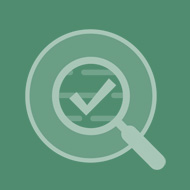Adverse drug reactions and interactionsAllergies and immunologyAntibiotic resistance and stewardshipBiochemistryCancer careCardiovascular systemChild healthComplementary and alternative medicinesCorrespondenceDebatesDermatologyDiabetesEar, nose and throatEndocrinology (excl diabetes)Feature lettersGastroenterologyGeneticsGenitourinary system (male)GuidelinesGynaecology and urinary tract disorders (female)HaematologyHealth informaticsHepatologyImmunisationInfectionsIntegrated Performance and Incentive FrameworkMāori healthMedicine indicationsMedicine subsidyMedicines managementMedico-legal issuesMental healthMusculoskeletalNephrologyNeurologyNewsNutritionOccupational medicineOlder person’s healthOncologyOphthalmologyOral healthPacific peoples healthPain managementPalliative carePeer group discussionsPharmacologyPHO Performance ProgrammePregnancy and reproductive healthProfessional practice and developmentPublic healthReportsResearch updatesRespiratory conditionsRheumatologySexual healthSmoking, alcohol, and drug misuseTrauma and surgical proceduresVirology





